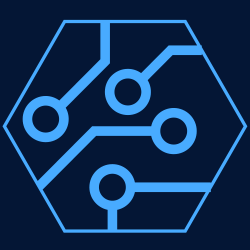Transform Your IBM i Data into Actionable Insights | Real-Time Analytics with Profound LogicDiscover how Profound Logic empowers organizations to unlock the full potential of their IBM i data through real-time analytics, dynamic dashboards, and AI integration. Learn how to build interactive visualizations using Fusion Charts, implement natural language processing, and leverage machine learning for predictive analytics – all while making your business data work smarter, not harder.#IBMi #DataAnalytics #BusinessIntelligence #ProfoundLogic #RealTimeData #Dashboard #AI #BusinessIntelligence Read More
Displaying the configuration status using SQL noreply@blogger.com (Simon Hutchinson)
[[{“value”:”I don’t use the Work with Configure Status command, WRKCFGSTS, frequently, mostly to vary on and off devices and occasionally controllers. I know that others do, and I have been asked to provide information such as a list of all the controllers’ status.
As part of the last round of Technology Refreshes, IBM i TR5 and 7.5 TR11, a new View was added that allows us to see the same information in a better way.
With the WRKCFGSTS I am limited with the data I can retrieve.
Work with Configuration Status (WRKCFGSTS)
Type choices, press Enter.
Type . . . . . . . . . . . . . . CFGTYPE
Configuration description . . . CFGD *ALL
Output . . . . . . . . . . . . . OUTPUT *
Remote location . . . . . . . . RMTLOCNAME *NONE
Range . . . . . . . . . . . . . RANGE *NET
Status . . . . . . . . . . . . . STATUS *ALL
The valid configuration types, CFGTYPE, are:
Read more »”}]] Read More
Salary question danielharner
[[{“value”:”(900 employees, 20+ locations) I’ve been programming in RPG for 5 years and the company relies on me heavily for all BI, WMS, and other updates that come on a daily basis.
I’ve been with the company for 9 years and have been a sys admin prior to transitioning to programming.”}]] Read More
Beyond Modernization: Why Your IBM i Applications Need Futurization Profound Logic
[[{“value”:”Mission-critical IBM i systems face unprecedented challenges as specialized developers retire. Learn how futurization goes beyond traditional modernization to secure your business’s future.
The post Beyond Modernization: Why Your IBM i Applications Need Futurization appeared first on Profound Logic.”}]] Read More
Sequel | Ask the Sequel Experts Fortra
[[{“value”:”Join this webinar on February 18th for insight from our knowledgeable Sequel support team and to hear their answers to some of the most frequently asked questions from customers like you, including:
This webinar is a unique opportunity to hear how Sequel can empower your company to solve the most complex business intelligence questions.”}]] Read More


